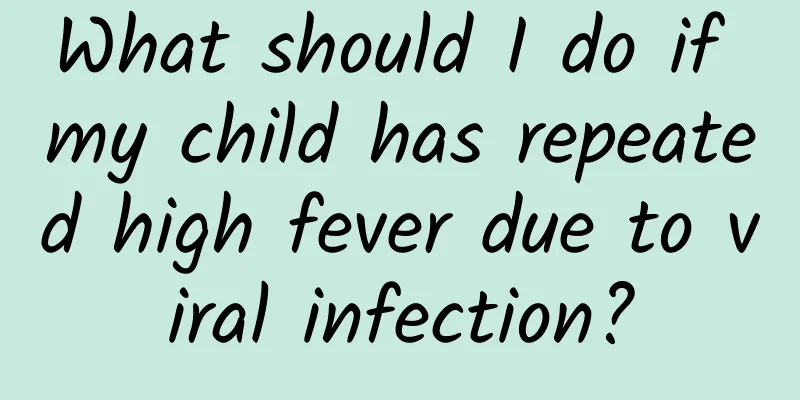What are the symptoms of migraine? Four major symptoms of migraine

|
Migraine is a relatively common disease, which is mainly manifested by obvious pain on one side of the patient's head. Migraine has a great impact on people's physical health, and may even affect the patient's work, life and study. Therefore, migraine patients need to take active treatment measures to treat this disease. Migraine symptoms vary depending on the specific situation. Here are four major symptoms of migraine. 1. Migraine with aura (generalized migraine) It is a moderate to severe throbbing headache accompanied by nausea, vomiting, or photophobia. Physical activity makes headaches worse. The attack begins with only mild to moderate dull pain or discomfort, which develops into severe throbbing or throbbing pain after a few minutes to hours. About 2/3 of the headaches are unilateral, but they can also be bilateral, and the pain sometimes radiates to the upper neck and shoulders. The headache lasts 4 to 72 hours and is often relieved by sleep. There are clear, normal intervals between attacks. If 90% of the attacks are closely related to the menstrual cycle, it is called menstrual migraine. The diagnosis can only be made after at least five of the above-mentioned attacks have occurred and various organic diseases inside and outside the brain have been excluded. 2. Migraine with aura (typical migraine) can be divided into two phases: aura and headache The most common visual symptoms during the aura phase are photophobia, flashes of light, sparks, or complex visual hallucinations, followed by visual field defects, scotomas, hemianopsia, or temporary blindness. A small number of patients may experience hemiplegia, mild hemiplegia or speech disorders. The precursor usually lasts 5 to 20 minutes. The headache phase often occurs when the aura begins to subside. The pain usually starts on one side of the supraorbital, postorbital or frontotemporal area, gradually worsens and extends to half of the head, or even the entire head and neck. The headache is throbbing, throbbing or drilling-like, and gradually worsens into persistent severe pain. It is often accompanied by nausea, vomiting, photophobia and phonophobia. Some patients have facial flushing, excessive sweating, and conjunctival congestion, while some patients are pale, listless, and have anorexia and other symptoms of migraine. An attack can last 1 to 3 days. The headache is usually relieved significantly after sleeping, but fatigue and weakness may occur for several days after the attack. Everything is normal during the intervals between attacks. 3. Ophthalmoplegia-type migraine is extremely rare The onset age of ophthalmoplegic migraine is mostly under 30 years old. There is a history of headache attacks fixed on one side. After a more severe headache attack, paralysis of the eye muscles on the same side occurs, and drooping of the upper face is the most common. The paralysis lasts for days or weeks before recovery. The paralysis recovers completely after the first few attacks, but after multiple attacks, partial eye muscle paralysis may remain and not recover. Neurological imaging failed to rule out organic intracranial lesions. 4. Persistent migraine A migraine attack that lasts for more than 72 hours is called status migraineus. Benign paroxysmal vertigo in childhood (migraine-like attacks) has a family history of migraine but the child himself has no headaches: the symptoms of migraine are multiple, short-term attacks of vertigo, and paroxysmal imbalance and anxiety may also occur, accompanied by migraine symptoms such as nystagmus or vomiting. Neurological and electroencephalographic examinations were normal. Everything is normal during the interval. Some children may develop migraines as they grow up. |
Recommend
Symptoms of Melanoma
Melanoma is a type of tumor that is highly malign...
Sore throat and hoarseness
Sore throat is a very common symptom. Fever, cold...
Aquagenic urticaria
Aquagenic urticaria is a type of urticaria. This ...
Can carrot and apple water cure constipation?
Because women's body structure is different f...
Rice Krispie Candy Recipe
Rice candy is a traditional snack, among which th...
How to regulate delayed menstruation, Chinese medicine conditioning methods
Menstruation is a way for women to regulate their...
How to remove corns
Corns are mostly caused by long-term friction. Af...
Nursing of myasthenia gravis
Myasthenia gravis is extremely harmful to patient...
Mild mitral regurgitation
The mitral valve belongs to the left ventricular ...
How to relieve hemorrhoid pain
There is a saying among the people that "nin...
What medicine to take for pleurisy
Due to the development of medical technology and ...
Calories in cream
Cream is a dairy product made from milk, and its ...
Can goose eggs cure breast hyperplasia?
Goose eggs, a folk remedy, can treat breast hyper...
How to overcome blood sickness
How to overcome blood phobia? This situation is m...
Mild concussion symptoms
Mild concussion is mainly a temporary dysfunction...









